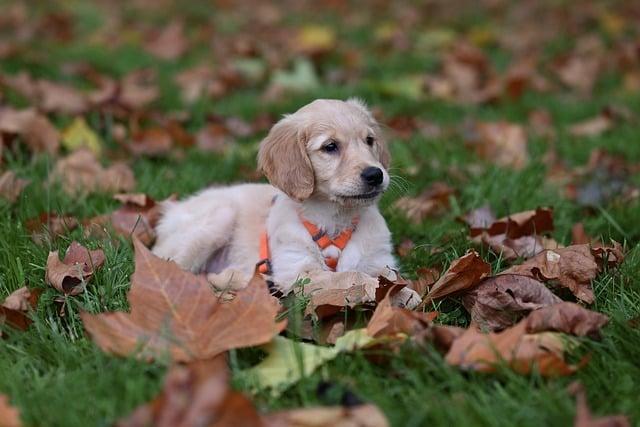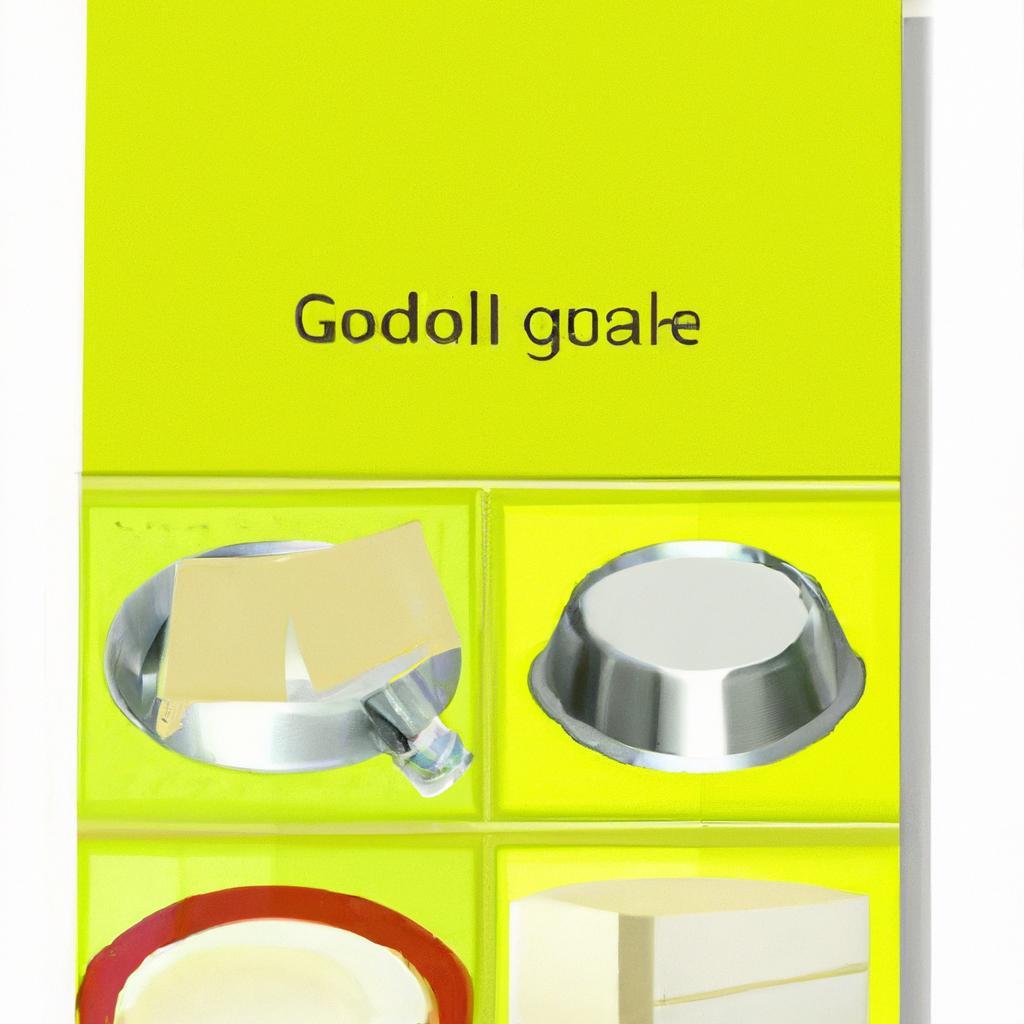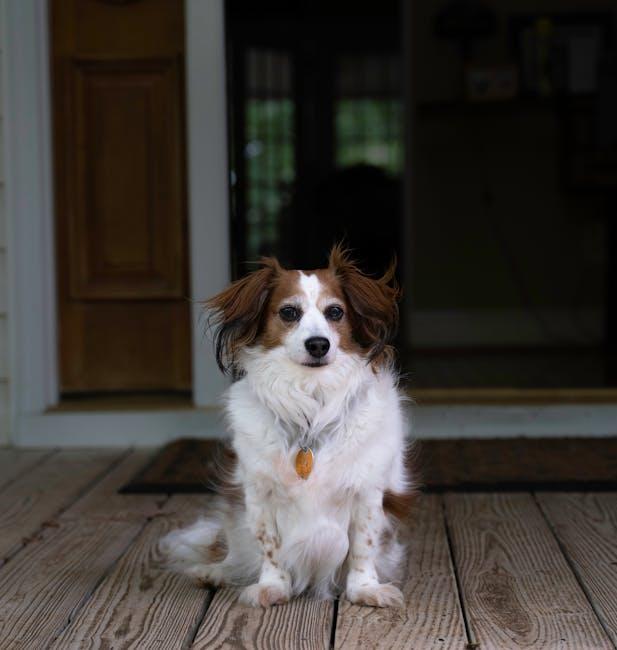Once, a timid child named Lily found solace in a gentle golden retriever named Max. Max, with his warm eyes and wagging tail, sensed her fear and approached slowly, offering a comforting nuzzle. As they played, Lily’s laughter filled the air, and her worries faded. Golden retrievers are known for their friendly nature and patience, making them ideal companions for scared children. If you want to help your child feel safe and loved, consider welcoming a golden retriever into your home. Their loyalty can transform fear into joy.
Contents
- Understanding the Emotional Needs of Scared Children in Choosing a Dog
- Identifying Breeds Known for Their Gentle Temperament and Patience
- Creating a Safe and Supportive Environment for Child-Dog Interaction
- Expert Tips for Introducing a New Dog to a Scared Child Effectively
- Q&A
Understanding the Emotional Needs of Scared Children in Choosing a Dog
When selecting a dog for a child who experiences fear, it is essential to recognize that emotional needs play a pivotal role in fostering a positive relationship between the child and their new furry companion. Children who are scared may require a dog that embodies a calm demeanor and gentle disposition. Breeds known for their patience and nurturing qualities can provide the reassurance and comfort that a frightened child needs. Consider breeds such as Golden Retrievers, Cavalier King Charles Spaniels, and Bichon Frises, which are often characterized by their friendly and affectionate nature.
Moreover, the size of the dog can significantly impact a scared child’s comfort level. Smaller breeds tend to be less intimidating and can help alleviate anxiety. Dogs like Pugs and Shih Tzus are not only adorable but also possess a playful spirit that can help draw out a child’s confidence. It’s crucial to ensure that the dog is not overly energetic or boisterous, as this can overwhelm a sensitive child. A calm, smaller dog can serve as a gentle companion, allowing the child to feel safe and secure.
Another important factor to consider is the dog’s history and temperament. A dog that has been socialized well and has a stable temperament can make a world of difference for a child who is scared. Look for dogs that have been trained in positive reinforcement techniques, as these dogs are often more adaptable and less likely to exhibit fearful or aggressive behaviors. Visiting local shelters or rescue organizations can provide opportunities to meet dogs that have been assessed for their compatibility with children, ensuring a better match for your family.
Lastly, the process of introducing the dog to the child should be gradual and supportive. Allow the child to observe the dog from a distance before any direct interaction occurs. Encourage gentle interactions, such as offering treats or playing with toys, to build trust and familiarity. This approach not only helps the child feel more at ease but also fosters a bond that can lead to a lifelong friendship. By prioritizing the emotional needs of scared children, you can create a nurturing environment where both the child and the dog can thrive together.
Identifying Breeds Known for Their Gentle Temperament and Patience
When searching for a canine companion that can provide comfort and security to a timid child, certain breeds stand out due to their gentle nature and patient demeanor. These dogs are not only affectionate but also possess an innate ability to sense the emotions of those around them, making them ideal for families with sensitive children. Here are some breeds that are particularly known for their calm and nurturing temperament:
- Golden Retriever: Renowned for their friendly disposition, Golden Retrievers are incredibly patient and eager to please. Their gentle approach makes them excellent companions for children, especially those who may be anxious or fearful.
- Cavalier King Charles Spaniel: This breed is known for its affectionate nature and adaptability. Cavaliers are gentle and loving, often forming strong bonds with children, providing a sense of security and companionship.
- Bichon Frise: With their cheerful and playful demeanor, Bichon Frises are also known for their gentle temperament. They are small, non-aggressive, and thrive on human interaction, making them perfect for children who may need extra reassurance.
- Newfoundland: Despite their large size, Newfoundlands are often referred to as “gentle giants.” Their calm and patient nature makes them incredibly suitable for families, as they are known to be protective and nurturing towards children.
In addition to these breeds, it’s essential to consider the individual dog’s personality and history. Many mixed-breed dogs also exhibit these gentle traits, and adopting from a shelter can provide a loving home to a dog in need. When selecting a dog, look for one that has been socialized well and has a history of being around children. This can significantly enhance the likelihood of a harmonious relationship between your child and their new furry friend.
Training and socialization play crucial roles in fostering a positive environment for both the dog and the child. Engaging in obedience training not only helps the dog learn commands but also builds confidence, which can be particularly beneficial for a nervous child. Positive reinforcement techniques can create a bond of trust and respect, allowing the child to feel secure around their canine companion.
Ultimately, the best dog for a scared child is one that embodies patience, gentleness, and a loving spirit. By choosing a breed known for these qualities and ensuring proper training and socialization, you can create a safe and nurturing environment where both your child and their new best friend can thrive together. The right dog can be a source of comfort, companionship, and joy, helping to alleviate fears and foster a sense of security in your child’s life.
Creating a Safe and Supportive Environment for Child-Dog Interaction
When introducing a dog to a child who may be fearful, it’s essential to establish a nurturing atmosphere that fosters trust and comfort. Begin by allowing the child to observe the dog from a distance, ensuring they feel secure. This gradual exposure can help the child acclimate to the presence of the dog without feeling overwhelmed. Encourage the child to engage in activities such as watching the dog play or participating in simple training exercises, which can promote a sense of control and understanding.
Creating a safe space for both the child and the dog is crucial. Designate an area where the child can interact with the dog under supervision, ensuring that the dog has a retreat option if it feels stressed. This space should be free from distractions and loud noises, allowing for calm interactions. Consider using **positive reinforcement techniques** to reward both the child and the dog for gentle behavior, reinforcing a positive association with each other.
Education plays a vital role in easing fears. Teach the child about dog body language and appropriate ways to approach and interact with dogs. Understanding signs of comfort and discomfort can empower the child, making them feel more confident in their interactions. Use **visual aids** or simple stories to illustrate these concepts, making the learning process engaging and relatable.
Lastly, patience is key. Allow the relationship between the child and the dog to develop at its own pace. Celebrate small victories, whether it’s the child petting the dog or simply sitting near it. This gradual approach not only builds confidence but also strengthens the bond between them. By fostering a supportive environment, you can help transform fear into friendship, paving the way for a harmonious relationship that benefits both the child and the dog.
Expert Tips for Introducing a New Dog to a Scared Child Effectively
Introducing a new dog to a child who may be apprehensive can be a delicate process, but with the right approach, it can lead to a beautiful bond. **Start by choosing the right environment** for the introduction. A calm, quiet space where the child feels secure can help ease their fears. Avoid overwhelming the child with too much excitement or noise. Instead, create a serene atmosphere where both the child and the dog can feel at ease.
**Use positive reinforcement** to create a positive association with the new dog. Encourage your child to engage with the dog in a gentle manner, perhaps by offering treats or toys. This not only helps the child feel more comfortable but also allows the dog to associate the child with positive experiences. Remember to supervise all interactions closely to ensure safety and comfort for both parties.
**Educate your child about dog behavior** to help them understand what to expect. Teach them about body language, such as when a dog is happy or scared. This knowledge can empower your child, making them feel more in control and less fearful. Use simple, relatable terms to explain how to approach the dog, emphasizing the importance of calmness and gentleness.
**be patient and give it time**. Every child and dog is unique, and the introduction process may take longer for some than others. Allow your child to set the pace, and encourage them to take small steps towards building a relationship with the dog. Celebrate small victories, and reassure your child that it’s okay to feel nervous. With time, understanding, and love, the bond between your child and the new dog can flourish.
Q&A
-
What breeds are best for scared children?
Some of the best dog breeds for scared children include:
- Cavalier King Charles Spaniel: Gentle and affectionate, they are known for their friendly demeanor.
- Golden Retriever: Patient and friendly, they are great companions for children.
- Bichon Frise: Playful and cheerful, they can help boost a child’s confidence.
- Beagle: Friendly and curious, they are typically good with kids and can help ease fears.
-
How can a dog help a scared child?
A dog can provide emotional support and companionship, helping to:
- Build confidence through positive interactions.
- Encourage socialization with other children and pets.
- Offer a sense of security and comfort during stressful situations.
-
What should I consider before getting a dog?
Before bringing a dog into your home, consider:
- The dog’s temperament and energy level.
- Your child’s specific fears and how they may react to different breeds.
- The amount of time and effort you can dedicate to training and socializing the dog.
-
How can I introduce a dog to my scared child?
To ensure a positive introduction, follow these steps:
- Choose a calm environment for the first meeting.
- Allow your child to approach the dog at their own pace.
- Encourage gentle interactions, such as petting or playing with toys.
- Supervise all interactions to ensure safety and comfort for both the child and the dog.
choosing the right dog for a scared child can foster a bond of trust and companionship. Prioritize gentle breeds that promote confidence and security, ensuring a harmonious relationship that enriches both lives. Make the right choice today!

大家好,我是彼得潘,專業的手法身體治療師。我喜歡探索和研究各種主題,並透過與人工智慧的合作分享專業、實用、有趣的文章。我們定期進行人工審核,以確保內容的準確性。如果您發現文章中有任何不準確的地方,請隨時與我們聯繫,我們會及時糾正。您可以透過 [email protected] 與我們聯繫。



